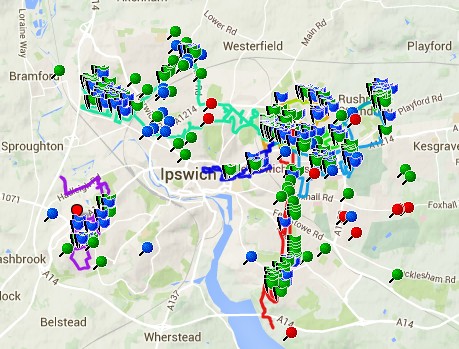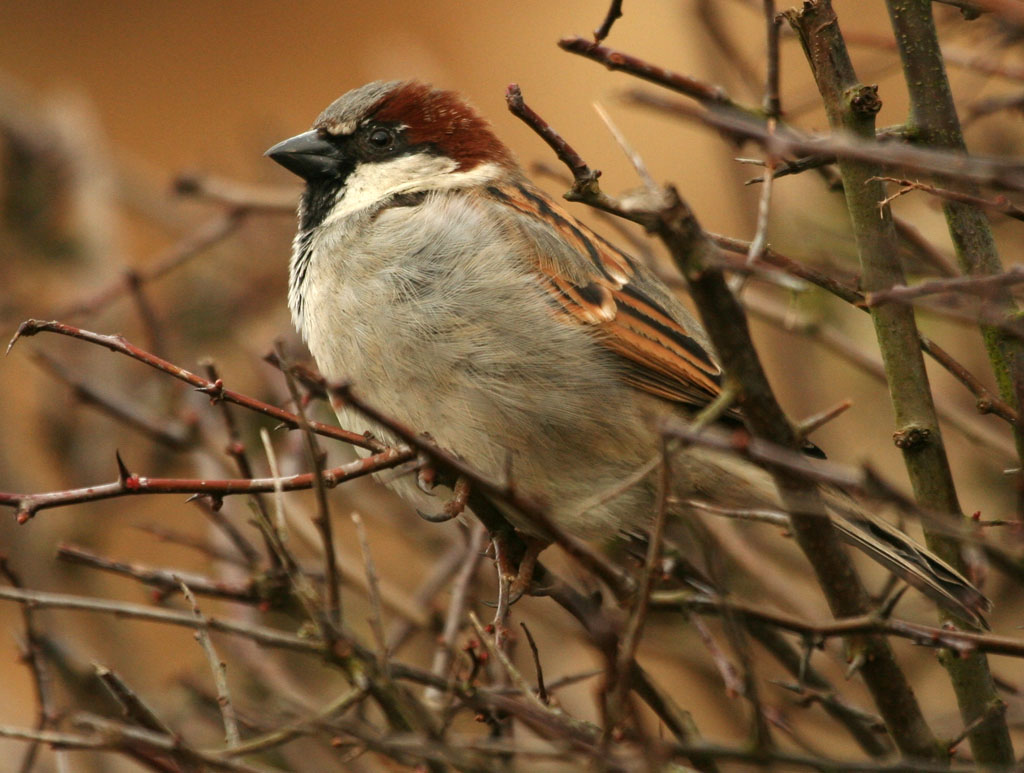House Sparrow Survey 2016
Part of the Wild Ipswich Swifts and Sparrows initiative run by the RSPB Ipswich Local Group.
House sparrows are a highly sedentary and colonial species that has been associated with man for at least 10,000 years. Most house sparrows do not venture further than 100m from the colony. This means that once a local colony dies out it, it is highly unlikely to be re-established. The Group ran a survey of Ipswich's house sparrows in 2006, and we are surveyed at two levels in 2006
download the Sparrows Of Ipswich 2016 final report (PDF)
includes results of a small catch-up survey in 2017 to complete some parts we didn't get to last year
house sparrow ID
The BTO has a helpful video to ID house sparrows from possible confusion species
The house sparrow on the RSPB website
1 - a questionnaire about the house sparrows where you live or know well

This is a repeat of the 2006 survey, which attempted to record points where sparrows are, and also places where they have been lost. Most of our respondents in 2006 told us about the birds where they lived, but if you know about some at another place you visit regularly then by all means send in another form or use the comments field. Reports of places where sparrows used to be present and have been lost are very valuable, particularly if you have an indication of when they were lost, and if they disappeared after something was changed.
2 - a sampled census of house sparrows across Ipswich
This survey needs a bit more volunteer effort to survey the presence of breeding sparrows in a 350m x 350 m square in the town. Ipswich covers about 50 square kilometres, by sample censusing the sparrows across the town we will be able to find out how the density of sparrows varies across the town. This will show the best parts of the town to target conservation and any follow-up survey effort.